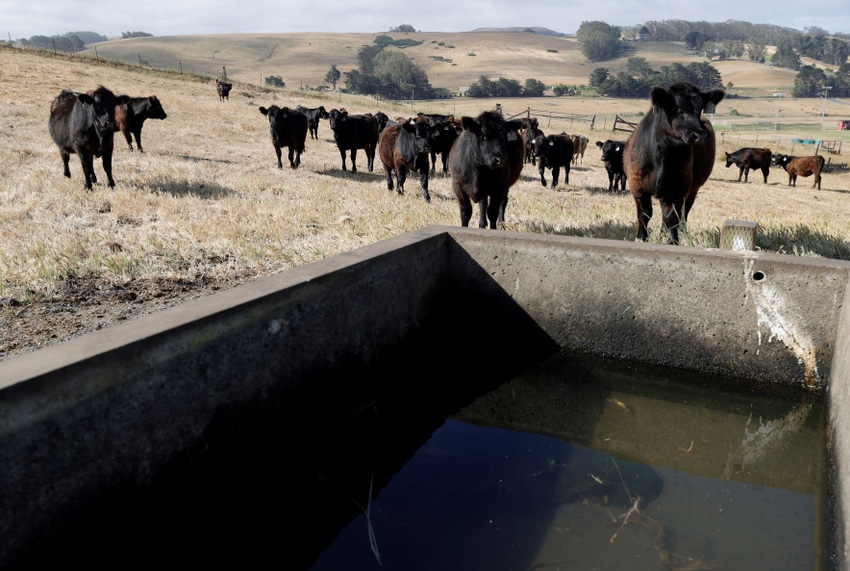Drought and forage challenges continue in 2023
Drought conditions must ease significantly in major beef cattle states before herd rebuilding can begin.

Persistent drought in major beef cattle production regions continues to have a significant impact on the cattle industry despite improvements in drought conditions in other parts of the country. USDA’s National Agricultural Statistics Service (NASS) released two reports recently that indicate that forage challenges continue in the central and southern Great Plains.
The weekly “Crop Progress” reports include range and pasture conditions in each state, from May-October each year. The U.S. average of poor to very poor pasture conditions in early May was 37%, less severe than one year ago across the country. The first week of May showed that the worst pasture conditions, measured as the percent poor and very poor, are in the states of Kansas (64%); Nebraska (68%); Oklahoma (54%) and Texas (52%). Kansas and Oklahoma are in significantly worse shape this year compared to last year with poor/very poor ratings of 41% and 39%, respectively. The Nebraska rating slightly improved from last year at 68% versus 73% poor/very poor, while Texas is less bad compared to the 74% poor to very poor rating one year ago.
The latest monthly crop production report from NASS also included the December and May 1 hay stocks. For the beginning of the hay crop year, May 1, U.S. hay stocks were down 13.4% year over year and were down 26.4% from the ten-year 2012-2021 average. Compared to the ten-year average, in Kansas, May 1 hay stocks were down 25.5%; Nebraska was down 51.6%; Oklahoma was down 62.3%; and Texas was down 41.3%. Collectively, these four states account for 25% of U.S. May 1 hay stocks on average. In 2023, these four states accounted for 18.7% of total May 1 hay stocks and are down by 44.9% compared to the ten-year average for the four-state total.
Not only were the May 1 hay stocks very limited in these states, but continued drought is impacting 2023 hay production. On average, the states of Kansas, Nebraska, Oklahoma, and Texas account for about 21% of total U.S. hay production. These states ranked (1) Texas; (4) Nebraska; (5) Kansas; and (7) Oklahoma for hay production in the last decade. Reduced hay production this year in this region has implications well beyond the borders of these four states.
These four states accounted for 9.3 million beef cows on January 1, 2023, just over 32% of the total U.S. beef cow herd and include four of the top ten beef cow states—Texas (1), Oklahoma (2), Nebraska (4) and Kansas (6). Delayed, slow and limited pasture and hay growth in these areas is likely still provoking some cattle liquidation. Total beef cow slaughter through April this year is down 11.2% from last year’s elevated level. However, it is likely that reduced beef cow slaughter in drought-free areas is masking some additional herd liquidation in these worst drought areas. In Oklahoma, for example, the auction volume of cull cows and bulls is up 21.9% year over year for the first 19 weeks of 2023.
The much-anticipated herd rebuilding and corresponding market conditions in the beef cattle industry cannot begin in earnest until drought conditions ease significantly in these major beef cattle states.
About the Author(s)
You May Also Like



